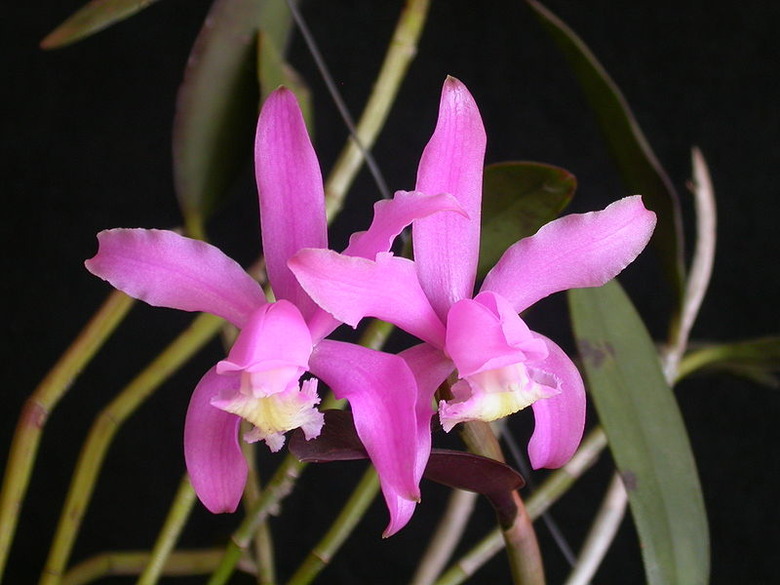How To Revive An Orchid
Things Needed
- Water
- Spray mist bottle
- Shallow tray or saucer
- Pebbles
- Fresh orchid bark
- Larger orchid pot
- Orchid food
- Clean secateurs
Whether your orchid looks like there may be just an ounce of life still in it or it's just in need of a pick-me-up, recovery can easily be accomplished in the home with a few basic items and consistent care. Rehydrating your orchid is always first on the triage list. Repotting, fertilizing and providing the appropriate amount of light are the other critical elements. Orchids are hardier plants than you might think, so give the plant a second life and be impressed with your own green thumb.
Step 1
Hydrate your orchid as the first step in reviving it. Place the pot under a faucet gently flowing with tepid water. Drench the planting medium until it looks soaked and the pot feels heavy in your hands. Do this once a week every week. Prepare a humidity tray to increase the moisture in the ambient air around our orchid 24 hours a day.
- Whether your orchid looks like there may be just an ounce of life still in it or it's just in need of a pick-me-up, recovery can easily be accomplished in the home with a few basic items and consistent care.
- Drench the planting medium until it looks soaked and the pot feels heavy in your hands.
Line a waterproof planter saucer, low shallow bowl, pie plate or tray with small stones or pebbles. Fill it up with water and set your orchid plant to rest atop but not in the pebbles and water. Mist your orchid several times a week with clean water to boost the ambient humidity even more as orchids thrive in extremely humid conditions.
Step 2
Repot your orchid into a larger pot with all fresh potting medium. Always repot your orchid immediately after it has been drench-watered so the roots will be more pliable and less likely to be damaged in the process. Slide the orchid out of its old pot and gently brush away all of the old potting medium untangling and girdling roots in the process.
Line a pot at least 2 to 6 inches larger in diameter than the old pot with a few inches or fresh orchid medium. Set the orchid plant down gently in a push the fresh medium around the roots to support them and secure the plant upright. Add a bamboo stake if needed to stabilize the plant, being careful not to pierce the roots.
- Line a waterproof planter saucer, low shallow bowl, pie plate or tray with small stones or pebbles.
- Fill it up with water and set your orchid plant to rest atop but not in the pebbles and water.
Step 3
Fertilize your orchid lightly each week after it is wet from watering. Use one-quarter of the recommended dose of orchid food to a full portion of tepid water and stir to dissolve and mix. Pour the fertilizer solution slowly through the planting medium and roots over the sink allowing the excess to drain away. Never over feed your orchid as it will burn the roots and stress or kill the plant. Always err on the side of a weaker fertilizer solution applied more frequently over a stronger solution applied once a month. Always fertilize over wet planting medium and roots.
Step 4
Pull away any yellow, wilted or brown leaves that easily come away from the orchid stem. Do not tug or cut them off. When the plant is ready to give them up they will lift off without any pull. Cut any old dead flower stem to the base of the plant between the leaves. If the stem remains green and succulent allow it to die back in place until it is brown and desiccated to a crispy state.
- Fertilize your orchid lightly each week after it is wet from watering.
Step 5
Place your orchid where it will receive bright indirect light throughout the day. Some direct sun in the morning and late afternoon can be tolerated but never direct midday sun. If you give your orchid some direct sun you may need to up the amount of water you provide for it.
